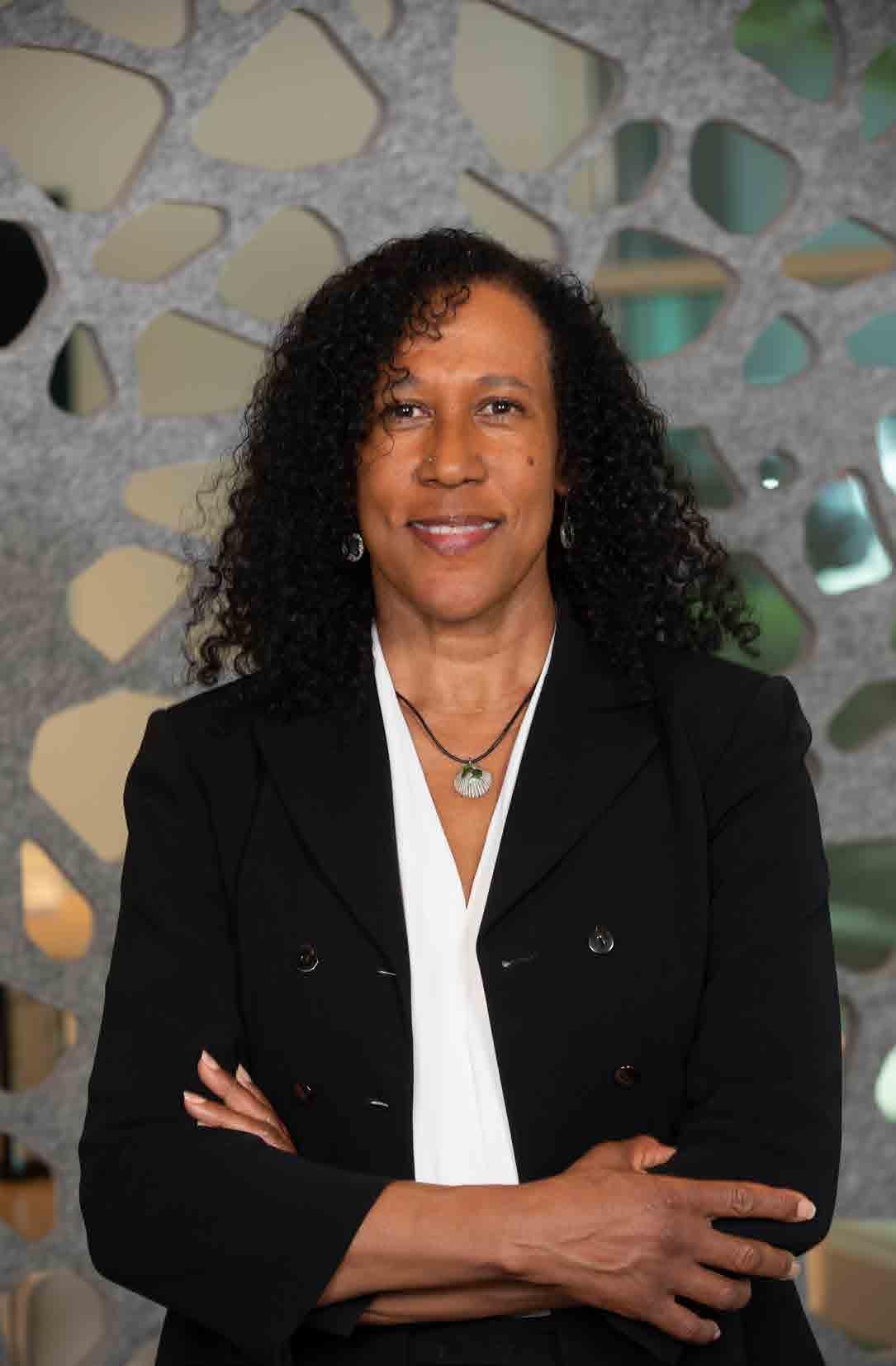
4 minute read
• TECHNOLOGY AND HEALTHCARE: “PATIENT AND DOCTOR EXPERIENCE MUST BE TOP PRIORITY”
IF THERE’S ONE SECTOR WHERE TECHNOLOGY HAS A DIRECT IMPACT ON WORK, WELL-BEING, AND LIFE, THEN IT’S HEALTHCARE. AT GARTNER, CK ANDRADE PHD, SENIOR DIRECTOR OF ANALYST, HEALTHCARE AND LIFE SCIENCES, RESEARCHES SMART TECHNOLOGICAL SOLUTIONS. HER VISION IS THAT PEOPLE – PATIENTS AND DOCTORS ALIKE – MUST ALWAYS BE AT THE HEART OF THIS.
By: Marco van der Hoeven
“Ihave experienced first-hand the challenges in healthcare and in caring for patients in their home. And it has shaped the pathway in my career,” says ck Andrade PhD, Senior Director of Analyst, Healthcare and Life Sciences at Gartner, talking about her passion for healthcare and technology. She has a background in healthcare, technology, research, and business. “I now have practical tools for all kinds of things. Gartner has a great word for this: versatilist.” “During the pandemic, I worked for a healthcare technology provider developing digital health platforms. I taught doctors how they could use digital technology at the university. And I advised hospitals how to use technology to deal with a crisis. So, I saw first-hand the devastating impact COVID-19 had on healthcare. I was part of the rapid transformation and tried to build the tools I needed.”
INNOVATION
“People now often think COVID destroyed the healthcare system, but there were already problems in healthcare before the pandemic. We know that the IT infrastructure didn’t support innovation and providing care was simply too expensive. Healthcare professionals left, and patients did not have a good experience. All COVID-19 did was push us to that tipping point where we just couldn’t go on doing the same old things anymore.” “It wasn’t enough to keep things ticking along... we had to do things better. I always put people first; we need to treat both healthcare professionals and patients better. We have really come to a point where we can no longer regard a poor experience for patients and people in healthcare as the standard. It needs to be our highest priority. But our research shows that the priorities in healthcare investments have shifted from patient experience and staff satisfaction to productivity and efficiency.”
GAP
“This makes me a little uneasy, because we always have to remember that it’s all about the patients and the staff. What’s also important to me is that everyone deserves care. But the pandemic has taught us that not everyone gets the care they need. We saw a huge gap that became ever wider. That really grabbed my attention, because we need to put health equality first.” “The other thing I’ve noticed is that the gap is now widening within our IT systems and virtual care solutions. Just sticking a band-aid on actually created more problems. Now that we’ve the time to sit down and look more closely at virtual healthcare solutions, we can see the value, but we also see the challenges. I am writing a memorandum about discontent in virtual healthcare and how we can resolve it, so that’s a top priority for me.”
CK ANDRADE
ETHICS
With technology developing so quickly now, Andrade warns that we should remember to take digital literacy and ethics into account. “With digital transformation occurring so rapidly, we sometimes forget about the ethics. We forget to think about the people it affects and not only teach them how it works, but also why we are doing it and what we are trying to achieve.” This is all happening in a world where consumer and, in turn, patient expectations are changing. “We are now approaching healthcare with the digital experiences of the banking sector, for example. Patients want that seamless experience in healthcare, too, throughout the whole ecosystem. But we are struggling with that in healthcare, on top of the fact that the dynamics of the healthcare ecosystem have changed. It’s a busy market; it’s like going to a restaurant with a 50-page menu.”
TRANSFORMATION
“My advice is to embrace technology with a people-first approach by putting patient and consumer experience first. Think of patients and clinicians before you develop your technical and digital transformation strategy. Bring them on board. And go beyond just maintaining the status quo digitally. Re-invent clinical care as you reinvent the technical strategy. Take an active role in the healthcare ecosystem, and don’t spend all your time worrying about the competition or what others are doing. Find your position, leverage partnerships and connect data, partners, and patients across the ecosystem.” And for busy healthcare professionals, Andrade also has a suggestion: “You don’t have to do anything major right away. Sign up as a superuser, and take a moment to give feedback on the technology. Don’t be a passive receiver. I remember when they used to import electronic medical records: I spent a third of my time with my patient, and two-thirds of my time on admin. We tried to get on with our work anyway, but we didn’t complain and we didn’t make any suggestions. So, my advice for busy clinicians: Rattle the cage, give feedback, and be part of a pilot study. We don’t have to take the lead, but we can be more active.” “When we start out as a doctor, we make a pledge to our patients. And in that relationship, that sense of responsibility for their care, using technology sometimes feels like outsourcing that responsibility. But embracing technology like AI doesn’t mean giving up on your commitment to your patients; it allows you to see more of them. Ultimately, it helps you deliver better care.”








